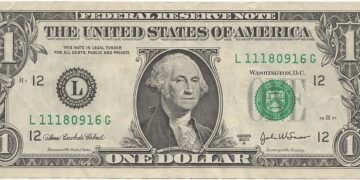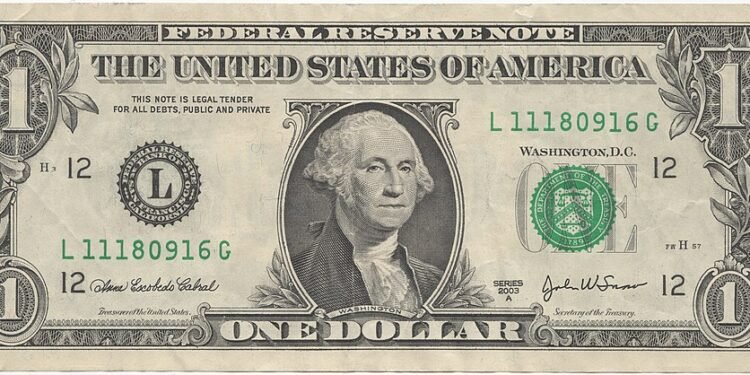indovoices.com – In recent years, the concept of de-dollarization—the gradual reduction in global reliance on the U.S. dollar—has gained increasing traction in both economic policy debates and public discourse. Motivated by a complex web of geopolitical shifts, economic realignments, and strategic rivalries, many nations are exploring ways to diversify away from the greenback.
The expansion of the BRICS bloc, new bilateral trade agreements using local currencies, and the rise of digital and gold-backed currency experiments have all added momentum to the narrative that the dollar’s dominance is in jeopardy.
But is the world truly witnessing the beginning of a post-dollar era? Despite the growing volume of such conversations, multiple layers of economic, structural, and geopolitical reality suggest that the dollar’s role as the cornerstone of the global financial system remains intact—and deeply entrenched.
Understanding the Drivers of De-Dollarization
De-dollarization refers to the global movement to reduce reliance on the U.S. dollar in trade, investment, and reserves. Countries advocating for this shift often aim to promote the use of local currencies, increase gold reserves, and develop alternative financial infrastructures to counterbalance the perceived over-dependence on the U.S. financial system.
The push toward de-dollarization stems from several interconnected motivations:
-
Geopolitical resistance to U.S. influence, especially from countries like Russia, China, and Iran, who view the dollar’s global dominance as a strategic vulnerability.
-
Weaponization of the dollar, where U.S.-led sanctions have pushed targeted states to seek alternatives to bypass the global dollar-based payment system (e.g., SWIFT).
-
A desire for monetary sovereignty, as emerging economies seek to shield themselves from external shocks caused by fluctuations in U.S. interest rates or inflation.
On the surface, these efforts point toward an inevitable weakening of the dollar-centric system. However, a deeper examination tells a different story.
Challenges to De-Dollarization
While the desire to move away from the dollar is evident, several challenges hinder the de-dollarization process:
-
Lack of Viable Alternatives: Other currencies, such as the euro and the Chinese yuan, face limitations. The euro is affected by political fragmentation within the European Union, and the yuan is not fully convertible, with capital controls in place.
-
Entrenched Financial Infrastructure: The global financial system is deeply integrated with dollar-based systems, making a shift to alternative currencies complex and costly.
-
Market Trust and Stability: The U.S. financial markets are perceived as stable and liquid, attracting investors and reinforcing the dollar’s dominance.
The Paradox of U.S. Deficits: A Feature, Not a Flaw
One of the most misunderstood aspects of global dollar dominance lies in the nature of the U.S. fiscal and current account deficits. Critics often cite America’s persistent overspending as a signal of economic vulnerability. However, in the context of the international monetary system, these deficits serve a fundamental purpose.
This is where the Triffin Dilemma becomes essential. In order for the U.S. dollar to function as the world’s primary reserve currency, the United States must supply the global economy with dollars. The only sustainable way to do so is by running external deficits—importing more than it exports and thereby releasing dollars into global circulation.
When the U.S. runs a deficit, it allows other countries to:
-
Export goods to the U.S., thereby earning dollars.
-
Use those dollars to participate in global trade and investment.
Thus, the U.S. deficit becomes the mechanism by which global dollar liquidity is sustained. Far from being a structural weakness, it is a necessary feature of a global economy that continues to rely on the dollar as its medium of exchange and store of value.
Investor Confidence and the Dollar
Investor behavior reflects continued confidence in the U.S. dollar:
-
U.S. Treasury Securities: Despite fluctuations, U.S. government bonds remain a preferred investment for their perceived safety and liquidity.
-
Global Investment: The U.S. continues to attract foreign investment, bolstered by its large economy, technological innovation, and robust legal framework.
The Foundations of U.S. Power Are Still Robust
To understand why the dollar retains its global primacy, one must look beyond economics and examine the full spectrum of American power:
-
Economic Scale: The U.S. maintains the largest nominal GDP in the world, exceeding $28 trillion.
-
Financial Infrastructure: Wall Street continues to serve as the nucleus of global capital markets, offering unmatched depth and liquidity.
- Military Superiority: The U.S. remains the world’s most powerful military, backed by the largest defense budget and a vast alliance network.
-
Global Influence: American soft power continues to shape global perceptions, preferences, and practices.
- Technological Leadership: American companies lead the world in innovation—Apple, Microsoft, Nvidia, Google, etc are all central to the digital economy.
These elements create a powerful trust premium around U.S. institutions and, by extension, the dollar.
BRICS: A Fragmented Front
The BRICS nations (Brazil, Russia, India, China, and South Africa) have expressed interest in creating alternative financial systems to reduce dollar dependence. The BRICS coalition is often touted as the most likely challenger to U.S. hegemony. However, progress has been limited due to differing economic interests and political agendas among member countries. For instance:
-
There is no unified currency, and financial systems are not integrated. While Russia advocates for a new international payment system, other members like India and Brazil are cautious about aligning too closely with anti-Western initiatives. Alternative currencies, such as the yuan, are still not fully convertible and operate within a restrictive regulatory framework.
-
Strategic rivalries—particularly between China and India—undermine cohesive action. Diplomatic incidents and proxy tensions, such as China’s defense support for Pakistan against India, exacerbate mistrust.
In practice, BRICS operates more as a symbolic alliance than a cohesive bloc with the capacity to implement systemic alternatives to the dollar.
The De-Dollarization Narrative: Aspirational, Not Operational
Despite de-dollarization efforts, the U.S. dollar continues to hold a dominant position in global finance:
-
Foreign Exchange Reserves: As of the fourth quarter of 2024, the dollar accounted for approximately 57.8% of allocated global foreign exchange reserves, according to the International Monetary Fund (IMF).
-
Trade Finance: The dollar remains the primary currency for trade finance, used in over 80% of transactions, particularly in commodities trading.
-
Global Transactions: The dollar is involved in a significant majority of international transactions, underscoring its central role in global commerce.
- Alternative currencies not strong yet, such as the euro and yuan. The euro, while significant, remains exposed to internal political fragmentation, while Yuan are still not fully convertible and operate within a restrictive regulatory framework.
-
Gold and cryptocurrencies lack scalability and efficiency for mainstream cross-border transactions.
In other words, the infrastructure that underpins the global dollar system—legal, financial, technological, and political—remains unrivaled. Replacing it would require decades of coordinated action, deep institutional reform, and a level of geopolitical harmony that is currently absent.
Final Thoughts: The Dollar Is Still the Anchor
While the discourse on de-dollarization raises valid strategic questions and reflects real geopolitical tensions, the world is far from replacing the U.S. dollar with a viable alternative. The dollar’s dominance is not merely a product of historical inertia—it is reinforced daily by systems, behaviors, and incentives that remain unmatched.
Until another currency or system can offer the same level of trust, utility, and universality, the dollar will remain the backbone of global finance.
In short: the world may fantasize about monetary multipolarity, but in the marketplace of currencies, the dollar is still king.





































